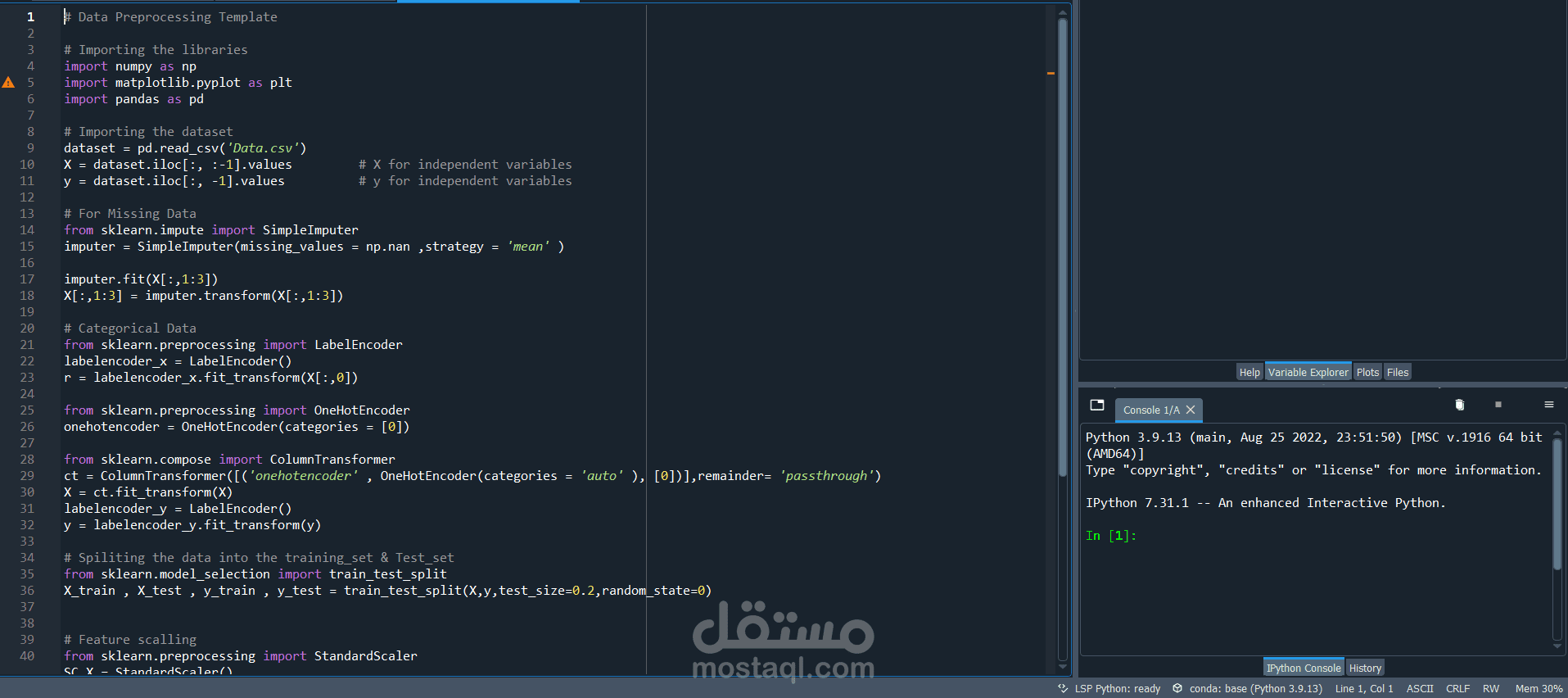Machine Learning
تفاصيل العمل
Machine learning is a subset of artificial intelligence (AI) that focuses on developing algorithms and models that allow computers to learn and make predictions or decisions without being explicitly programmed. It involves the use of mathematical and statistical techniques to enable machines to improve their performance on a given task through experience or data.
The process of machine learning typically involves the following steps:
1. Data Collection: Gathering relevant data from various sources, such as databases, APIs, or manual labeling.
2. Data Preprocessing: Cleaning and transforming the collected data to ensure it is in a suitable format for the machine learning algorithms. This step may include tasks like handling missing values, scaling features, and encoding categorical variables.
3. Model Selection: Choosing an appropriate machine learning model based on the problem type and the available data. There are various types of models, including decision trees, support vector machines, neural networks, and ensemble methods.
4. Model Training: Feeding the prepared data into the selected model to train it. During training, the model learns patterns and relationships within the data to make accurate predictions or classifications.
5. Model Evaluation: Assessing the performance of the trained model using evaluation metrics, such as accuracy, precision, recall, and F1 score. This step helps determine if the model meets the desired performance criteria.
6. Model Optimization: Iteratively refining the model by adjusting its parameters, architecture, or features to improve its performance. Optimization techniques may include cross-validation, hyperparameter tuning, and regularization.
7. Model Deployment: Integrating the trained model into a production environment where it can be used to make predictions or decisions on new, unseen data. Deployment may involve building APIs, creating user interfaces, or integrating the model into existing systems.
8. Model Monitoring and Maintenance: Continuously monitoring the deployed model's performance, ensuring its accuracy and reliability over time. Maintenance involves updating the model as new data becomes available or as business requirements change.
It's important to note that machine learning requires a good understanding of algorithms, mathematics, statistics, and programming. Additionally, the success of machine learning projects depends heavily on the quality and relevance of the collected data.
Machine learning can be applied to various domains, including image and speech recognition, natural language processing, recommendation systems, fraud detection, autonomous vehicles, and many others. The specific techniques and algorithms used in machine learning vary depending on the problem being solved and the available data.

